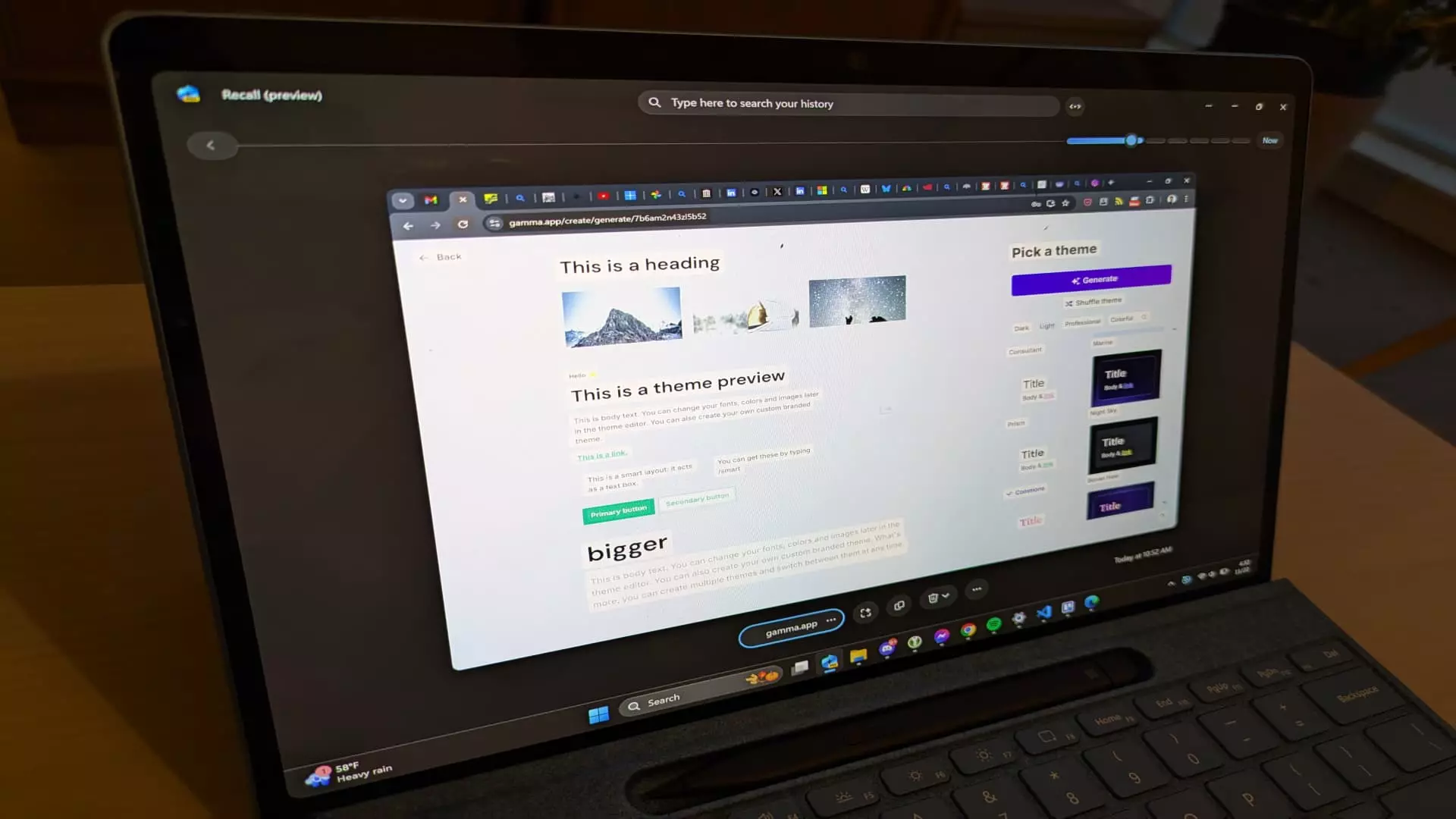Microsoft has taken strides toward enhancing user productivity with its innovative Recall feature, unveiled for testing on the latest Copilot+ PCs. This new addition promises a revolutionary approach to organizing and retrieving information, akin to a photographic memory. Nonetheless, while the concept is intriguing, initial assessments indicate that execution may fall short of expectations.
Introduced in May, Recall was heralded by Microsoft as an advanced tool designed to enhance user interaction with its Windows 11 operating system. By employing artificial intelligence, Recall aims to create a comprehensive visual archive of user activities, enabling users to retrieve information through keyword searches within screenshots. This function holds the potential to redefine how individuals manage their digital references and tasks, making information access almost instantaneous. However, the technology behind such revolutionary claims requires meticulous refinement, and early feedback suggests we are far from realizing its full potential.
Microsoft’s journey with Recall has not been without bumps. The security concerns raised by experts prompted a significant overhaul of the feature. Critics voiced apprehensions about user privacy and data security, leading to essential changes such as encrypting Recall’s database and defaulting the feature to be inactive. These adjustments reflect an awareness of the implications of integrating AI into personal data management but also suggest that Microsoft is treading carefully even as it pushes the envelope of what’s possible with technology.
Currently, Recall is accessible primarily to users with specific hardware configurations—namely those equipped with Qualcomm Snapdragon processors and neural processors optimized for AI workloads. This limitation excludes users with Intel and AMD chipsets from testing the new feature, creating an inadvertent divide among Windows 11 users. Furthermore, to use Recall, PCs must be enrolled in the Windows Insider Program’s developer channel, a requirement that might deter casual users wishing to experience innovative features without diving into pre-release software.
Functionality: A Mixed Bag
While the feature piques curiosity, its actual functionality raises concerns. One significant issue identified is the sporadic nature of the automated screenshot generation. Users could find themselves in a situation where substantial gaps exist between captured images, undermining the continuity that Recall aims to provide. The ability to exclude specific applications from recording activity is a useful feature; however, it’s troubling that not all apps are recognized, leaving potential gaps in tracking user activities.
Moreover, the expected reliability of Recall’s keyword search functionality appears to falter as well. An analysis reveals that the feature may not consistently identify all instances of keywords present in stored images. For example, typing in common terms or personal identifiers may yield incomplete results, which could be frustrating for users seeking efficient retrieval of their digital memories. The inconsistency in results, where expected matches do not appear, raises questions about the effectiveness of the search algorithms employed.
The actual user experience with Recall remains inconsistent. While navigating snapshots can be slow, with lag times that detract from an otherwise seamless flow, the potential benefit lies in its ability to transport users back to specific moments in their digital endeavors. A simple button click can return users to the precise context of their activity, an innovation that, if executed flawlessly, can enhance productivity significantly.
In summarizing the Recall testing experience, it is evident that while Microsoft’s intentions are commendable, the feature requires considerable refinement. Addressing technical issues, enhancing search capabilities, and improving compatibility should be priorities for the development team. Furthermore, as the landscape of digital productivity evolves, engaging user feedback will be essential to shaping a product that meets the diverse needs of Windows 11 users. The success of Recall may ultimately hinge on Microsoft’s responsiveness to these emerging challenges in the AI-driven user experience narrative.

